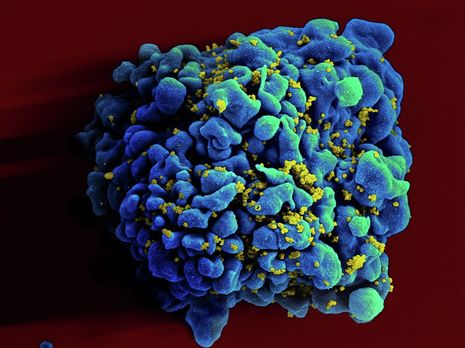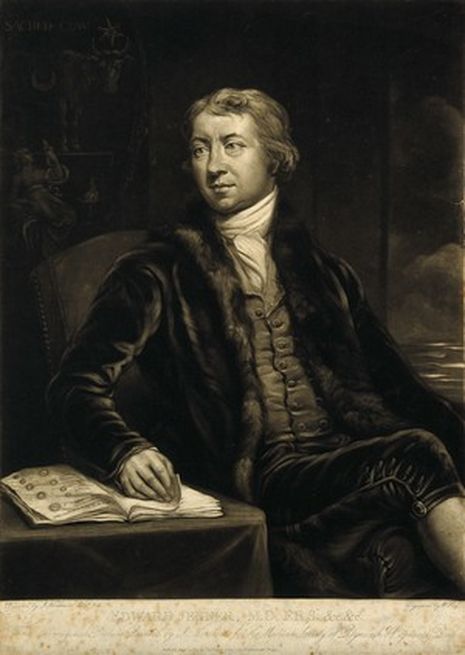An Introduction to Vaccine Challenges: Part 1
Dr. Hicham Bouabe explores the science behind vaccines in particular relation to the coronavirus pandemic in the first instalment of this 5-part article series.

Why is it so difficult to develop a coronavirus vaccine?
Peter Medawar, an immunologist awarded the Nobel Prize for Medicine and Physiology in 1960 for the co-discovery of acquired immunological tolerance, used to define viruses as “a piece of bad news wrapped up in protein”.
Indeed, viruses, such as COVID-19 (SARS-CoV-2), are nothing more than a tiny bit of genetic material (DNA or RNA), surrounded by a coat made often by proteins. And yet the outbreak of this little simple chemical mix often wreaks havoc in the headlines, especially when causing the deaths of hundreds of thousands of people.
The general public may justifiably wonder: why can’t scientists easily defeat such simple microorganisms?
Vaccines transform the body from a potential victim into a deadly trap for viruses.
Active vaccines are the most powerful tool against infectious diseases and consequently for the prevention of outbreaks - they are designed to train our natural immune system to recognise invading pathogens and boost an immune response against them.
To be able to spread from one person to the next, a pathogen needs first to invade the body of a person (host), be able to replicate inside it, and then can be transmitted to another person through appropriate routes, e.g. via respiratory droplets, faecal-oral, blood, sexual, or mother-to-child (vertical) transmission. However, the vaccination transforms the body from a host and spreader of a target pathogen from a potential “victim” into a deadly trap: once having invaded it, the pathogen won’t usually be able to leave it again “alive”. The transmission cycle of the pathogen is consequently interrupted, and, if a majority of the population is vaccinated against a target pathogen (called population or herd immunity), an outbreak of the infectious disease caused by this pathogen is usually prevented.
The active vaccination (immunisation) is a process in which a vaccine is exposed to the immune system, by administering it into the body, in order to develop immunity against it.
The vaccine is a biochemical formulation that typically contains the target whole, weakened (attenuated) or killed (inactivated) microorganism (bacteria, viruses, etc.), or its relative that causes no or very mild disease in humans.
“Why don’t we have, and can’t we quickly develop, vaccines against all known and emerging infectious microorganisms?”
Alternatively, the vaccine might contain only particular fragments of the pathogen (called antigens) against which the immune system reacts, typically its surface protein(s) or its deactivated poisonous proteins (called toxins) that cause the disease in their native state.
The antigen itself usually doesn’t induce per se an immune response, even if recognised by appropriate immune receptors. To cause an adequate immune response, inflammation needs to accompany the recognition of the antigen. Therefore, often further substances, called adjuvants, such as aluminium hydroxide and oil-water emulsion, are added into the vaccine formulation, in order to induce certain level of inflammation that is needed to initiate and/or enhance the immune response to the actual antigen, especially when killed pathogens or purified antigens are used for the vaccination. Live vaccines (containing whole attenuated microorganisms) contain ‘natural adjuvants’, such as components of the bacterial cell wall material and DNA, or viral RNA, etc., and thus they usually don’t need the addition of artificial adjuvants.

Once successfully vaccinated, the immune system develops defence components (typically antibodies, but often also certain types of T cells) against chemical structures (antigens) of the target pathogen (e.g., surface proteins, toxins, etc.). This immune response is then ‘stored’ in the body (called immunological memory) and is ready for immediate use. When the actual disease-causing microorganism, which contains the same/similar chemical structures administered previously through vaccines, infects the body, the immune system recognises it through its immunological memory and eradicates it very fast before it becomes morbid.
Why are we unable to develop vaccines against all known and emerging infectious diseases?
Coming back to the question at the beginning of this article: “why can’t scientists defeat very simple microorganisms like viruses?”, we can now, after this brief introduction, ‘translate’ it into a particular scientific question: why don’t we have, and can’t we quickly develop, vaccines against all known and emerging infectious microorganisms?
There are several barriers to successful development of vaccines, some scientific and technical, some economic and political in nature, and others with an organisational aspect.
In the following series, I will discuss the scientific challenges to vaccine development.
The scientific barriers to successful development of vaccines
Scientific challenges in vaccine development are multifaceted. Researchers have to deal with many variable, non-standardised, factors. Different combinations of these factors need to be tested for vaccination efficacy and safety. For instance:
- There are different types of vaccines, each needs to be considered and tested for efficacy and safety against each given target pathogen.
- The efficacy of a vaccine depends on the nature and immunogenicity of the antigen (ability to provoke an immune response), the type of the adjuvant, as well as being dependent on the immunological background of the vaccine recipients.
- The administration route of a vaccine has also a major impact on its efficacy and safety, hence different routes of vaccine delivery into the body need to be tested.
- The viruses tend to change their antigens, which requires continuous monitoring of the genetic variation of infectious organisms, and accordingly the updating of vaccine formulations to include the accurate antigens of the most current circulating viruses.
- A vaccine needs to be efficient independent of the immunological background of vaccine recipients.
- The risk of vaccine misfire needs to be excluded.
- Misleading animal models delay vaccine development.
For a rational comprehension of the scientific challenges, I will give in the following series a basic outline of these and other factors that impact vaccine development.
The upcoming series consist of the following four parts:
- An introduction to vaccine challenges, Part 2: Different types of vaccines and adjuvants.
- An introduction to vaccine challenges, Part 3: The impact of vaccine delivery route.
- An introduction to vaccine challenges, Part 4: Mutating viruses, non-uniform immunity, vaccine misfire and misleading experiments.
- An introduction to vaccine challenges, Part 5: The need for a ‘universal vaccine platform’.
 News / Cambridge academics stand out in King’s 2026 Honours List2 January 2026
News / Cambridge academics stand out in King’s 2026 Honours List2 January 2026 Interviews / You don’t need to peak at Cambridge, says Robin Harding31 December 2025
Interviews / You don’t need to peak at Cambridge, says Robin Harding31 December 2025 Comment / What happened to men at Cambridge?31 December 2025
Comment / What happened to men at Cambridge?31 December 2025 Features / “It’s a momentary expression of rage”: reforming democracy from Cambridge4 January 2026
Features / “It’s a momentary expression of rage”: reforming democracy from Cambridge4 January 2026 News / AstraZeneca sues for £32 million over faulty construction at Cambridge Campus31 December 2025
News / AstraZeneca sues for £32 million over faulty construction at Cambridge Campus31 December 2025










